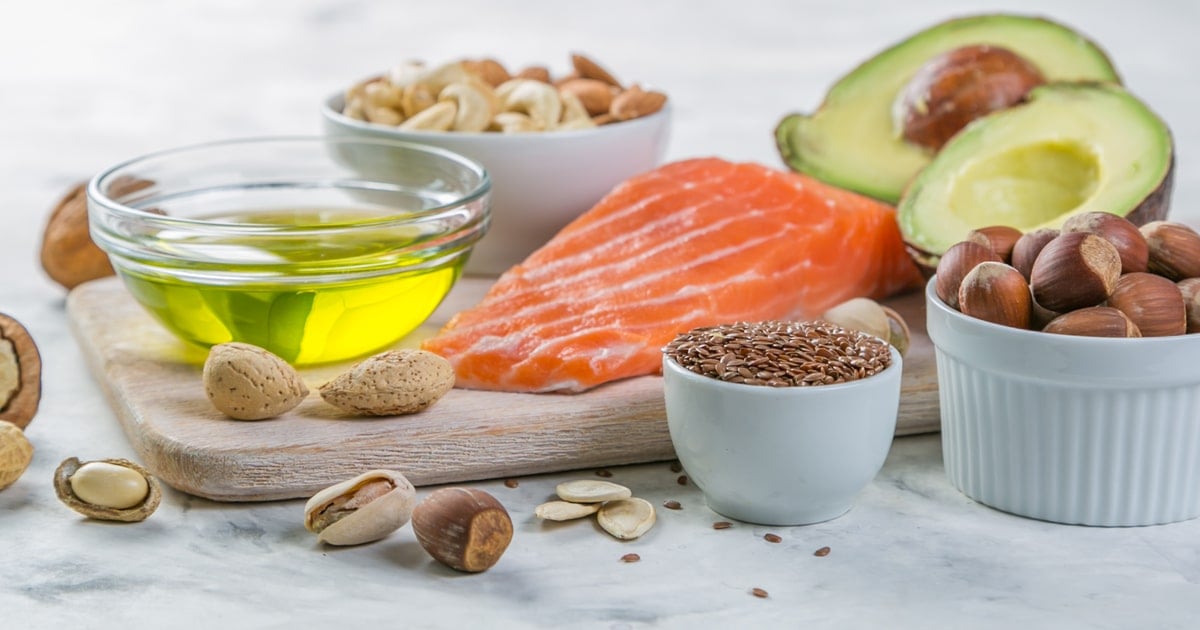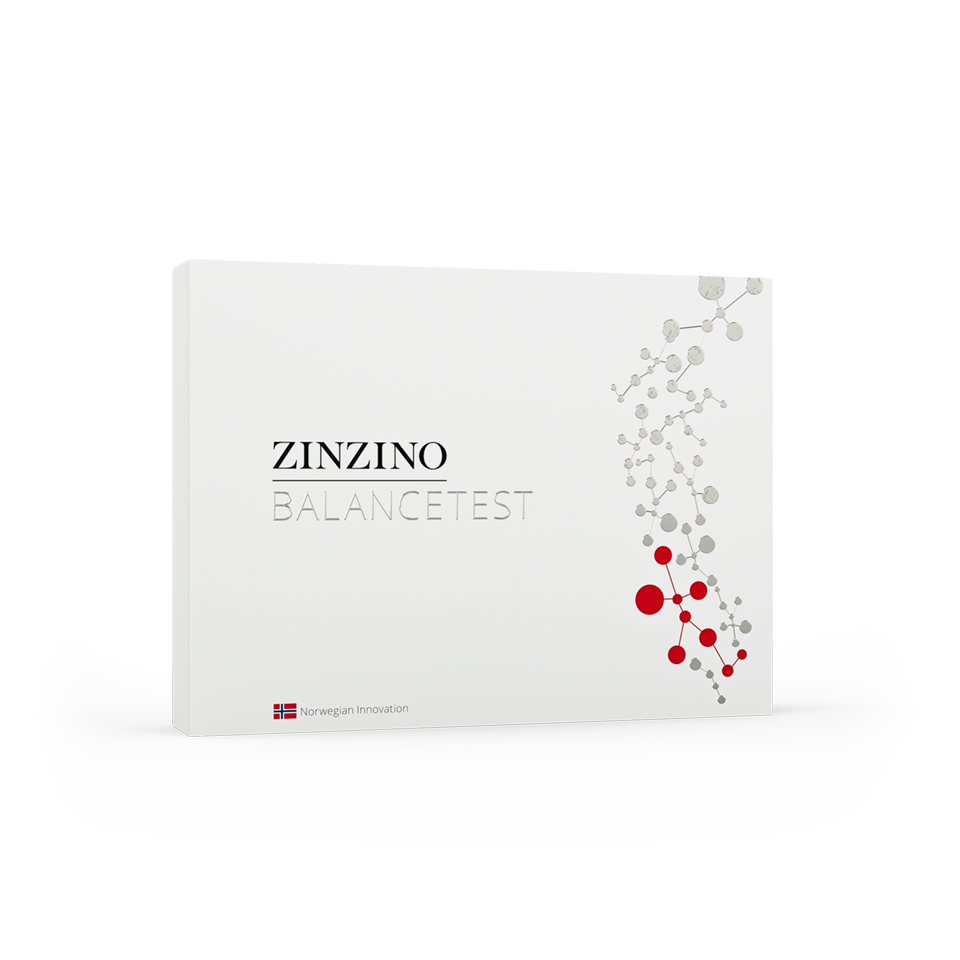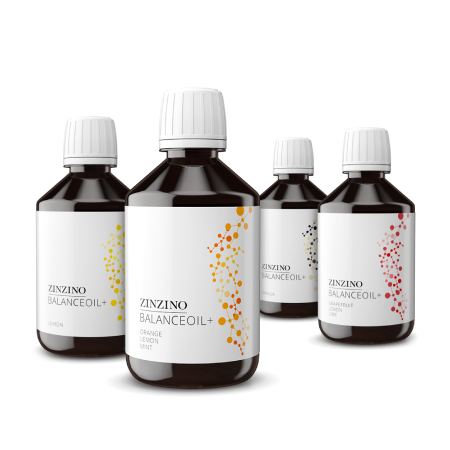Sybille Roßmüller
Zinzino Independent Partner
Hallo, ich bin Ihr unabhängiger Berater, der Sie auf Ihrer Gesundheitsreise begleitet.
Das Verhältnis von Omega-6 zu Omega-3 und warum es für die Gesundheit so wichtig ist

In unserer heutigen modernen Welt essen wir anders als zu Beginn des 20. Jahrhunderts. Damals gab es weder Fast Food noch hochgradig verarbeitete Produkte, die jede Menge Salz, Zucker und Omega-6 enthielten.
Aber auch wenn Sie auf verarbeitete Lebensmittel verzichten und Ihre Speisen selbst zubereiten, haben die Zutaten leider nicht mehr die gleiche Qualität wie früher. Denn das Fleisch stammt in erster Linie von Tieren, die in Ställen gehalten und mit Futtermitteln ernährt werden, statt im Freien zu grasen, während man Fische wie den Lachs in abgeschlossenen Becken heranzieht und mit Fischmehl füttert, statt dass sie in der Tiefsee schwimmen und Algen fressen. All dies wirkt sich massiv auf die Nährwerte unserer Lebensmittel und damit auch auf die Zellen und Gewebe unseres Körpers aus.
Das Verhältnis von Omega-6 zu Omega-3
Wir müssen sowohl Omega-3 als auch Omega-6 über unsere Nahrung aufnehmen, aber wichtig ist dabei, dass die beiden Fettsäuren im richtigen Verhältnis zueinander vorkommen – und bei 90 % der Menschen droht in dieser Hinsicht ein Ungleichgewicht. Diejenigen, die kein zusätzliches Omega-3 zu sich nehmen, laufen Gefahr, dass ihre Balance im schlimmsten Fall auf ein 25:1 Verhältnis ansteigen kann.
Diese Ergebnisse zeigen, dass unsere Nahrung nicht genügend Omega-3 enthält. Die Wissenschaft empfiehlt eine Balance von 3:1 zwischen den essentiellen Fettsäuren Omega-6 und Omega-3 anzustreben.
Der BalanceTest von Zinzino
Der BalanceTest von Zinzino ist ein einfacher Selbsttest, mit dem Sie die Fettsäuren in Ihrem Blut analysieren können, die diejenigen Fette widerspiegeln, die Sie über Ihre Ernährung aufnehmen. Der BalanceTest ist ein Trockenbluttest, der im Hinblick auf die Analyse von Fettsäuren wissenschaftlich als ebenso präzise anerkannt ist wie über eine venöse Blutentnahme.
Alles, was Sie benötigen, sind einige Blutstropfen, die Sie auf ein Whatman-Filterpapier geben. Der Zeitaufwand liegt bei unter einer Minute. VITAS Analytical Services1 testet anschließend anonym die Spiegel der elf Fettsäuren2, die gemeinsam etwa 98 % der Fettsäuren in Ihrem Blut ausmachen. Es handelt sich sowohl um gesättigte als auch um einfach ungesättigte (Omega-9) sowie ungesättigte (Omega-6 und Omega-3) Fettsäuren. Das Ergebnis wird nach ungefähr 20 Tagen auf der Website zinzinotest.com angezeigt, wo Sie auch Informationen zur Balance von Omega-6 und Omega-3, den Omega-3-Spiegel, ein Zellschutzprofil und vieles mehr finden.
Polyphenol Omega BalanceOil+
BalanceOil+ ist ein rein natürliches Nahrungsergänzungsmittel mit ausgewogener Polyphenol-Omega-Balance, das reich an Olivenpolyphenolen, Omega-33 und Vitamin D3 ist. Es reguliert auf sichere Weise den EPA- und den DHA-Spiegel, sorgt für eine Optimierung der Omega-6:3-Balance im Körper und erhält diese positive Wirkung anschließend auch aufrecht. Gleichzeitig schützt es die Zellen vor Oxidation4. Es enthält eine Mischung aus hochwertigen Ölen, die aus kleinen, wild gefangenen Fischen von bester Qualität und kalt gepressten, hochwertigen Oliven aus der Frühernte gewonnen werden.
Rein natürliche Inhaltsstoffe
Das Fischöl, das im BalanceOil+ von Zinzino steckt, stammt hauptsächlich von kurzlebigen, kleinen Hochseefischen, wie Sardinen und Anchovis, und wird aus dem ganzen, unverarbeiteten Fisch gewonnen.
Außerdem verwenden wir kalt gepresstes, extra-natives Olivenöl. Die spanische Picual-Olive wurde aufgrund ihres hohen Omega-9-Gehalts und ihrem sehr hohen Wert an Antioxidantien ausgewählt.
Die Oliven werden vor der eigentlichen Ernte gesammelt und entkernt, sodass nur die Früchte kalt gepresst werden. Das Ergebnis ist ein extra-natives Öl, das reich an Omega-9 (Oleinsäure)5 ist und einen sehr hohen Gehalt (über 750 mg/kg)6 an Antioxidantien (sogenannte Polyphenole) aufweist. Beides wirkt sehr vorteilhaft auf den Körper5. Die Polyphenole schützen nicht nur das BalanceOil+ in der Flasche, sondern insbesondere auch Ihre Zellen4.
BalanceOil+ enthält Vitamin D3. Wir verwenden ein natürliches Vitamin D3 (Cholecalciferol) aus Lanolin. Lanolin ist das natürliche, in Schafwolle enthaltene Fett. Das Vitamin D3 wird durch Auflösung einer Vorstufe des Vitamin D3 aus Lanolin hergestellt. Dieses wird dann chemisch verändert und durch UV-Strahlung aktiviert. Der chemische Prozess ist vergleichbar mit dem Prozess, der in der menschlichen Haut stattfindet, wenn sie Vitamin D3 produziert.
Darüber hinaus enthält unser BalanceOil+ ausschließlich natürliche Aromen.

Die wichtigsten Vorteile des BalanceOil+ von Zinzino
- Trägt zur normalen Gehirnfunktion bei7, da die tägliche Dosis 700 mg DHA enthält
- Trägt zur normalen Herzfunktion bei8, da die tägliche Dosis 1300 mg EPA und 700 mg DHA enthält
- Trägt zu einer normalen Funktion des Immunsystems bei9, da die tägliche Dosis 20 µg Vitamin D3 enthält
- Hilft bei der Aufrechterhaltung optimaler EPA- und DHA-Werte im Körper
- Hilft bei der Erhaltung optimaler Omega-6:3-Werte im Körper
- Hilft bei der Aufrechterhaltung des Polyphenolspiegels im Körper, um die Blutfette vor oxidativem Stress zu schützen4
- Unterstützt durch den Gehalt von 700 mg DHA eine gesunde und normale Funktion der Augen10.
- Trägt zur normalen Funktion von Knochen11, Muskeln12, Zähnen13 und Zellteilung14 bei, da die tägliche Dosis 20 µg Vitamin D3 enthält
- Sorgt für einen normalen Triglyzeridspiegel15, normalen Blutdruck16 und normale Kalziumwerte im Blut17
Wenn das BalanceOil+ 4 Monate lang Bestandteil Ihres persönlichen Gesundheitsplans gewesen ist, können Sie Ihr Blut erneut testen und die aktuellen Werte ermitteln. 95 % der Menschen, die Balance-Produkte von Zinzino einnehmen, liegen nach 120 Tagen bei einem Verhältnis von ungefähr 3:1.
* Diese Aussagen sind nicht von der amerikanischen Food and Drug Administration geprüft worden. Dieses Produkt ist nicht dazu geeignet, eine Erkrankung zu diagnostizieren, zu behandeln, zu heilen oder zu verhindern.
3. Fullyrðingin um að í fæðu sé mikið af trefjum
Fullyrðingin um að í fæðu sé mikið af trefjum og allar fullyrðingar sem hafa sennilega sömu merkingu fyrir neytandann, má aðeins setja fram þegar varan inniheldur að minnsta kosti 6 g af trefjum í hverjum 100 g eða að minnsta kosti 3 g af trefjum í hverjum 100 kkal.
4. Olive oil polyphenols
Pólýfenólar í ólífuolíu stuðla að verndun fituefna í blóðinu gegn oxunarálagi: Að skipta mettaðri fitu í mataræði út fyrir ómettaða fitu stuðlar að viðhaldi eðlilegra kólesteról-gilda í blóði. Olíusýra er ómettuð fita. Þessa fullyrðingu má aðeins nota um ólífuolíu sem inniheldur a.m.k. 5 mg af hýdroxýtýrósóli og afleiðum þess (þ.e. ólevrópein efnasambönd og týrósól) í hverjum 20 g af ólífuolíu. Fullyrðingin krefst þess að neytandinn sé upplýstur um að jákvæðu áhrifin fáist með daglegri inntöku á 20 g af ólífuolíu.
7. DHA contributes to the maintenance of normal brain
DHA stuðlar að því að viðhalda eðlilegri heilastarfsemi. Fullyrðinguna má aðeins að nota um matvæli sem innihalda a.m.k. 40 mg af DHA í hverjum 100 g og fyrir hverjar 100 kkal. Fullyrðingin krefst þess að neytandinn sé upplýstur um að jákvæðu áhrifin fáist með daglegri inntöku á 250 mg af DHA. Inntaka dókósahexensýru (DHA) mæðra stuðlar að eðlilegum heilaþroska hjá fóstrum og börnum sem eru á brjósti. Veita skal barnshafandi konum og konum með börn á brjósti upplýsingar þess efnis að dagleg inntaka DHA þurfi að vera 200 mg til viðbótar við ráðlagðan dagskammt af Omega-3 fitusýrum fyrir fullorðna, þ.e. 250 mg af DHA og EPA. Þessa fullyrðingu má aðeins nota um matvæli sem innihalda a.m.k. 200 mg dagskammt af DHA.
8. DHA and EPA contribute to the normal function of the heart
EPA og DHA stuðla að eðlilegri hjartastarfsemi. Þessa fullyrðingu má aðeins nota um matvæli sem innihalda a.m.k það magn af EPA og DHA sem tilgreint er í fullyrðingunni INNIHELDUR Omega-3 FITUSÝRUR samkvæmt upptalningu í Viðauka við reglugerð (EB) nr. 1924/2006. Fullyrðingin krefst þess að neytandinn skuli upplýstur um að jákvæðu áhrifin fáist með daglegri inntöku á 250 mg af EPA og DHA.
10. DHA contributes to the maintenance of normal vision
DHA stuðlar að því að viðhalda eðlilegri sjón. Fullyrðinguna má aðeins að nota um matvæli sem innihalda a.m.k. 40 mg af DHA í hverjum 100 g og fyrir hverjar 100 kkal. Fullyrðingin krefst þess að neytandinn sé upplýstur um að jákvæðu áhrifin fáist með daglegri inntöku á 250 mg af DHA. Inntaka dókósahexensýru (DHA) stuðlar að eðlilegum sjónþroska ungbarna upp að 12 mánaða aldri. Neytandinn skal upplýstur um að jákvæðu áhrifin fáist með daglegri inntöku á 100 mg af DHA. Þegar þessi fullyrðing er notuð um þurrmjólk fyrir ungbörn eldri en hálfs árs skulu a.m.k 0,3% af fitusýrum hennar vera DHA.
15. DHA and EPA contribute to the maintenance of normal blood pressure
DHA og EPA stuðla að því að viðhalda eðlilegum blóðþrýstingi. Þessa fullyrðingu má aðeins nota um matvæli sem veita 3 g dagskammt af EPA og DHA. Fullyrðingin krefst þess að neytandinn sé upplýstur um að jákvæðu áhrifin fáist með daglegri inntöku á 3 g af EPA og DHA. Þegar þessi fullyrðing er notuð um fæðubótarefni og/eða efnabætt matvæli skulu neytendur upplýstir um að ekki skuli taka inn meira en sem nemur 5 g af ráðlögðum dagskammti af EPA og DHA samanlagt.
16. DHA and EPA contribute to the maintenance of normal blood
DHA og EPA stuðla að því að viðhalda eðlilegu þríglýseríðmagni í blóði. Þessa fullyrðingu má aðeins nota um matvæli sem innihalda 2 g dagskammt af EPA og DHA. Fullyrðingin krefst þess að neytandinn sé upplýstur um að jákvæðu áhrifin fáist með daglegri inntöku á 2 g af EPA og DHA. Þegar þessi fullyrðing er notuð um fæðubótarefni og/eða efnabætt matvæli skulu neytendur einnig upplýstir um að ekki skuli taka inn meira en sem nemur 5 g af ráðlögðum dagskammti af EPA og DHA samanlagt. DHA stuðlar að því að viðhalda eðlilegum þríglýseríðgildum í blóði. Þessa fullyrðingu má aðeins nota um matvæli sem innihalda 2 g dagskammt af DHA og innihalda DHA ásamt eikósapentaensýru (EPA). Fullyrðingin krefst þess að neytandinn sé upplýstur um að jákvæðu áhrifin fáist með daglegri inntöku á 2 g af DHA. Þegar þessi fullyrðing er notuð um fæðubótarefni og/eða efnabætt matvæli skulu neytendur upplýstir um að ekki skuli taka inn meira en sem nemur 5 g af ráðlögðum dagskammti af EPA og DHA samanlagt.



Diese Seite teilen
Oder Link kopieren